Peru’s Sacred Valley winds through the Andes like a verdant corridor, sheltering ancient communities that’ve weathered centuries between soaring peaks and cascading rivers. This mystical region — locally called Valle Sagrado — once served as the Inca Empire’s beating heart and still captivates travelers with its stunning blend of rugged terrain, deep-rooted history, and living indigenous traditions.
Every settlement weaves its unique narrative through stone-paved alleys, stepped agricultural plots, and bustling markets where vibrant textiles mingle with farm-fresh produce. Though Machu Picchu draws most attention, scattered throughout these mountains are villages offering genuine windows into Andean existence.
Here’s a list of 16 extraordinary mountain communities that transform Peru’s Sacred Valley into a cultural goldmine.
Pisac
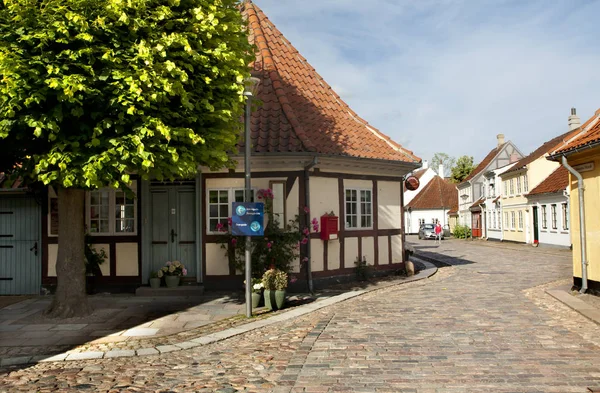
Pisac rests elegantly along the valley’s base while ancient ruins perch atop surrounding cliffs — resembling a crown of weathered stone. The community springs to life during its renowned Sunday market, where Quechua-speaking merchants hawk everything from hand-spun alpaca textiles to earthenware pottery glazed in natural hues.
There’s something magical about watching the contrast between the animated marketplace and the serene terraced fields carved into nearby slopes. Many visitors find themselves staying longer than expected, enchanted by genuine hospitality and that heady mix of church incense with the aroma of fresh-baked bread from neighborhood ovens.
Ollantaytambo
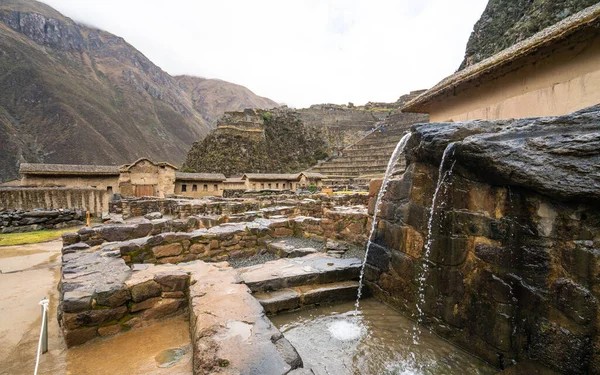
This fortress settlement stands among Peru’s most intact Inca communities, which earned it the moniker ‘Living Inca Town.’ Enormous stone blocks lock together with engineering precision — walls that’ve survived earthquakes and centuries of weathering without modern mortar.
The village preserves its original city planning, complete with narrow cobbled pathways and ancient aqueducts that still channel mountain water through districts where the same families have lived for generations. Contemporary residents maintain traditional textile work and farming methods while hosting travelers using Ollantaytambo as their departure point for Machu Picchu’s railway.
Like Travel Pug’s content? Follow us on MSN.
Chinchero
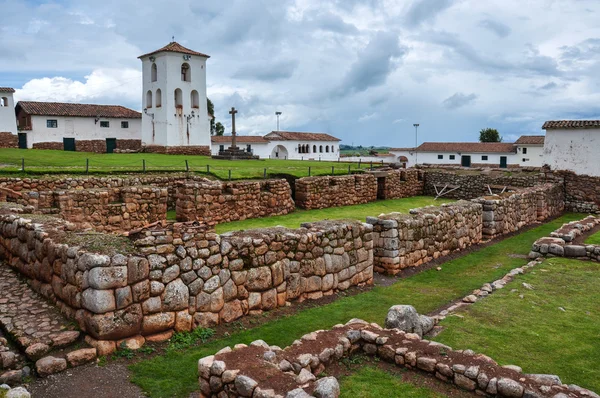
Sitting pretty at 12,500 feet elevation, Chinchero delivers some of the Sacred Valley’s most breathtaking panoramas — snow-dusted peaks forming a theatrical backdrop for everyday routines. The village has gained recognition for its weaving collective, where local women showcase techniques inherited through countless generations, crafting fabrics with organic dyes drawn from cochineal beetles and indigenous plants.
Sunday’s market here feels more genuine than tourist-heavy alternatives, with residents bartering potatoes, corn, and highland crops in the same square where Inca nobility once convened. The colonial church — built right atop Inca foundations — perfectly symbolizes Peru’s layered historical narrative.
Maras

Maras’ salt terraces tumble down the mountainside like an enormous crystalline staircase, creating one of Peru’s most Instagram-worthy landscapes. Local families have extracted salt from these ancient pools since before the Incas arrived, directing mineral-laden spring water into thousands of shallow basins where the high-altitude sun does the evaporation work.
The village itself maintains an almost dreamlike tranquility, with mud-brick homes and eucalyptus stands offering a peaceful contrast to the industrial appearance of salt operations. Harvest season visits reveal the grueling manual labor behind this time-honored trade, as workers hand-rake the rose-tinted salt using methods that haven’t changed in centuries.
Moray
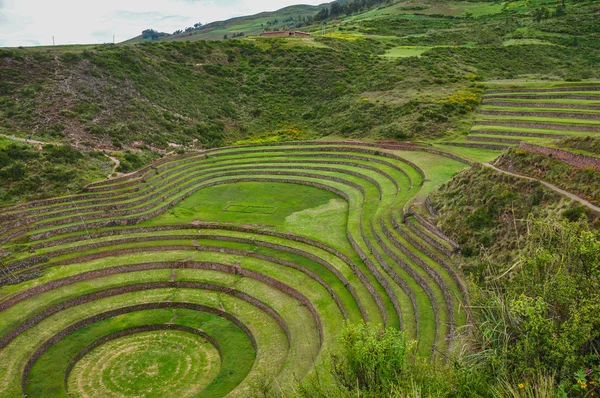
This agricultural testing ground of ancient Incas showcases circular terraces descending earthward — like some colossal amphitheater designed by geological architects. The concentric rings generate distinct microclimates at varying depths, leading researchers to theorize that Incas used this location for experimenting with crop varieties across different altitudes and temperatures.
Moray village sits quietly alongside, its inhabitants conducting daily business against the backdrop of Peru’s most fascinating archaeological puzzles. The site reveals the sophisticated agricultural and climatic knowledge that enabled Andean civilizations to flourish in such demanding mountain terrain.
Like Travel Pug’s content? Follow us on MSN.
Yucay
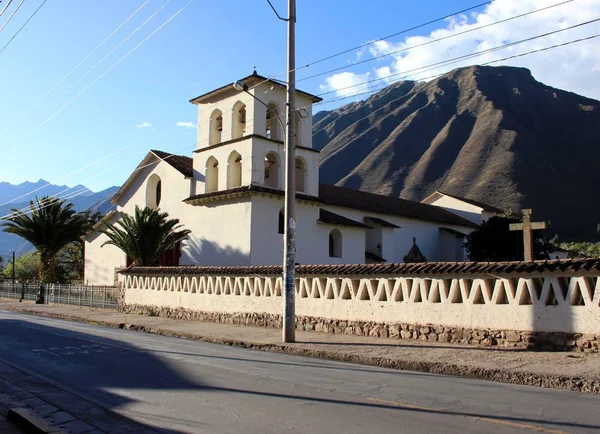
Tucked within one of the Sacred Valley’s broadest sections, Yucay benefits from mild weather that made it a preferred getaway for Inca royalty escaping Cusco’s thin air. The village retains aristocratic charm through its colonial estates and well-maintained plazas — though cornfields and grazing llamas serve as reminders of agricultural heritage.
Local families pride themselves on their Inca connections, with many tracing their ancestry back to nobles who served the royal court. The tranquil environment and fertile valley bottom make Yucay feel like a verdant refuge nestled between towering Andean summits.
Urubamba
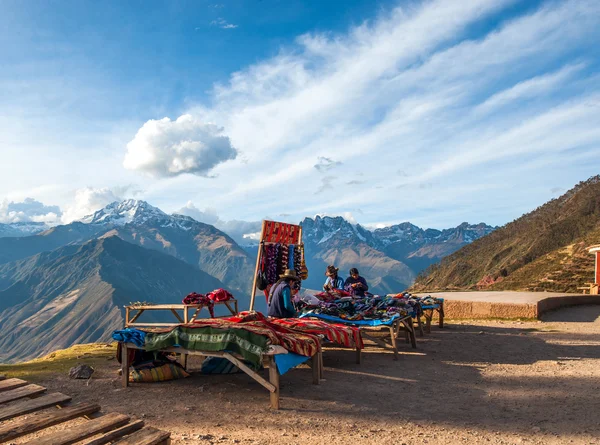
The valley’s commercial center thrums with energy from a working town where tourism blends surprisingly well with agriculture. Local markets burst with produce from neighboring farms, while adventure companies coordinate whitewater rafting expeditions down the rushing Urubamba River that gives this town its name.
The community functions as a practical launching pad for regional exploration — offering comfortable lodging and dining that serves both international guests and local households. Despite modern conveniences, Urubamba keeps strong cultural ties, with residents honoring ancient festivals and practicing agricultural methods rooted in Inca traditions.
Calca
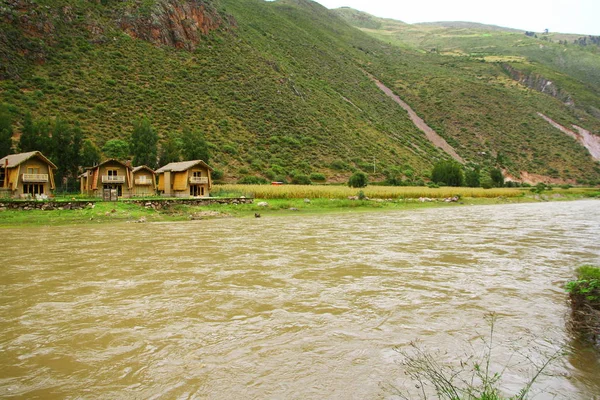
This gateway community to the Sacred Valley’s eastern reaches buzzes with authentic Peruvian life — largely untouched by tourism that characterizes other valley settlements. Local families run small enterprises selling everything from fresh dairy products to handwoven items, creating an economic network that operates independently of visitor spending.
The weekly market attracts vendors and customers from isolated mountain communities — transforming the town center into a colorful showcase of highland culture and trade. Natural hot springs emerge from the ground just beyond town, giving locals and occasional visitors opportunities to soak in mineral-rich waters surrounded by dramatic mountain vistas.
Like Travel Pug’s content? Follow us on MSN.
Lamay
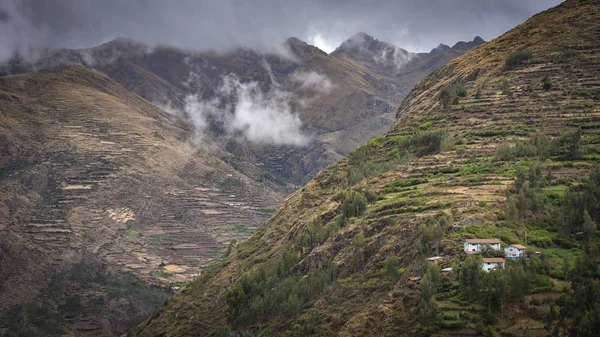
Strategically positioned where the Sacred Valley starts narrowing, Lamay gives visitors authentic rural Peruvian experiences without the crowds plaguing more famous destinations. The village keeps its farming identity — cornfields and potato plots extending riverward, while guinea pigs dart around family courtyards in scenes that would’ve looked familiar to Inca agriculturalists.
Local craftspeople continue traditional pottery creation, using clay from adjacent hillsides and firing methods inherited through generations. The relaxed lifestyle here offers a refreshing contrast to the organized tours and rigid schedules that dominate much Sacred Valley tourism.
Taray
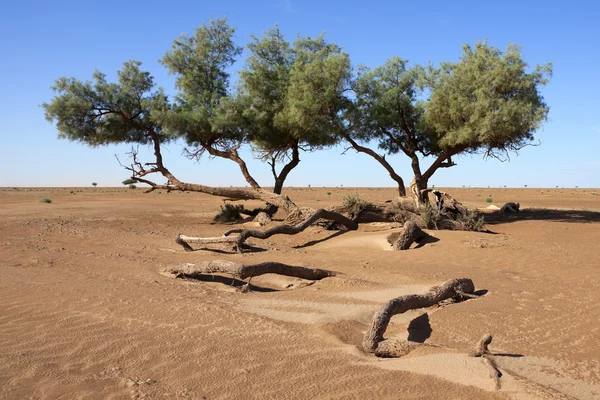
This small agricultural community rests peacefully beside the Vilcanota River, surrounded by some of the Sacred Valley’s most fertile farmland. Local families cultivate multiple native potato varieties, corn, and quinoa using traditional methods that maximize harvests in challenging mountain conditions.
The village church, with its understated colonial design, functions as the social hub where residents gather for celebrations, blending Catholic customs with ancient Andean rituals. Those who venture here often receive invitations to share meals with local families, experiencing the authentic warmth and hospitality that defines rural Andean culture.
Huayllabamba
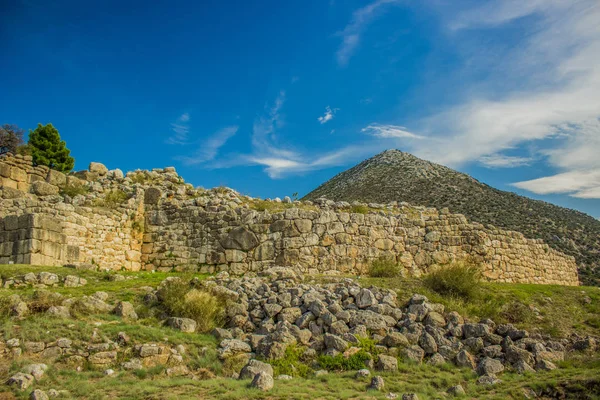
The final major settlement before the grueling ascent to Dead Woman’s Pass on the classic Inca Trail, Huayllabamba functions as both a welcome rest stop and a window into high-altitude mountain existence. Local families have adjusted to the steady stream of trekkers passing through their community, providing basic meals and camping areas while preserving their traditional farming and livestock practices.
The community grows potatoes and other resilient crops suited to 10,000-foot elevation, while llamas and alpacas graze steep slopes encircling the village. The striking difference between altitude-challenged hikers and locals who navigate thin air effortlessly showcases the remarkable adaptation of people who’ve called these heights home for centuries.
Like Travel Pug’s content? Follow us on MSN.
Raqchi
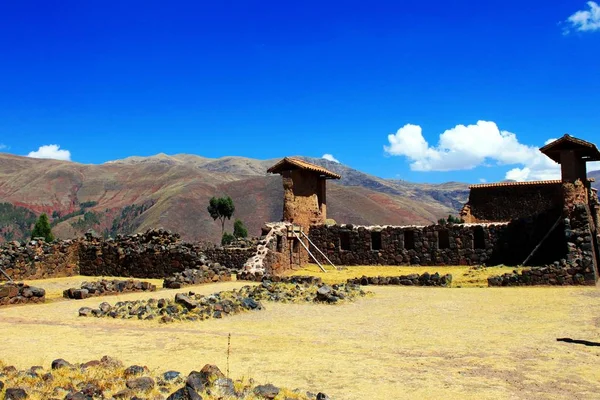
Celebrated for the imposing Temple of Wiracocha, this village displays some of the most impressive Inca stonework beyond Machu Picchu itself. The tremendous walls and ceremonial platforms showcase the engineering mastery that enabled Incas to construct monumental architecture in remote mountain settings.
Residents function as unofficial guides, recounting stories inherited through their families about religious ceremonies and royal visits that once drew thousands to this now-peaceful village. The surrounding terrain of rolling hills and distant snow-capped peaks creates a dramatic environment that helps explain why Incas selected this spot for one of their most significant religious centers.
Pumamarca
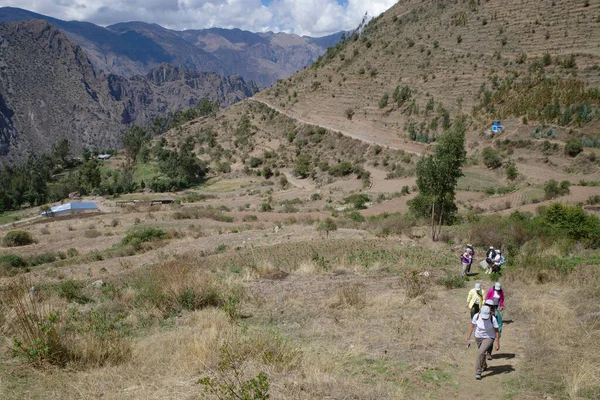
This traditional village sits on the slopes above the Sacred Valley floor, where terraced fields climb toward distant peaks like green steps carved into the mountainside. Local families have cultivated the same plots of land for generations, growing colorful varieties of native corn and potatoes using irrigation channels that date back to Inca times.
The village maintains its rural character with adobe houses clustered around a small central plaza, where children play while their mothers spin alpaca wool into yarn. Visitors who venture here discover a community that has remained largely unchanged by tourism, offering an authentic glimpse into daily life in the high Andes.
Huacahuasi
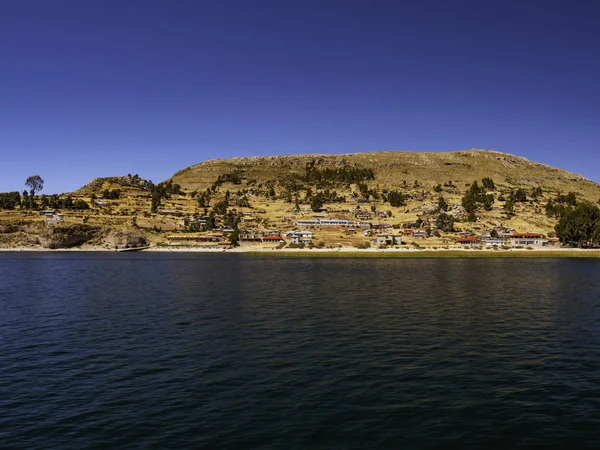
This isolated village requires considerable deviation from the main Sacred Valley circuit, yet rewards adventurous travelers with genuine glimpses of high-altitude Andean existence. Local families practice ancestral farming techniques, cultivating native potato varieties at elevations where most crops simply can’t survive.
The community preserves powerful spiritual bonds with surrounding mountains, considering them sacred entities that protect and sustain the village. Visitors here frequently participate in traditional ceremonies where coca leaves are presented to mountain spirits, gaining understanding of the profound spiritual connection between Andean peoples and their dramatic landscape.
Like Travel Pug’s content? Follow us on MSN.
Patacancha
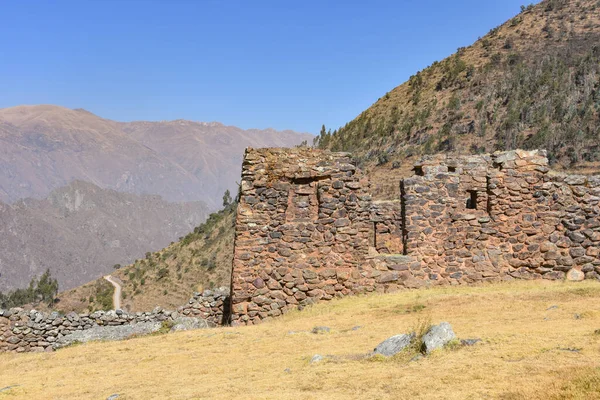
Hidden within a side valley branching from the main Sacred Valley, Patacancha feels like a secret realm where time moves according to grazing llama rhythms and seasonal agricultural cycles. The village sustains one of the region’s most vibrant weaving traditions, with women creating complex textiles using patterns and techniques that preserve cultural knowledge and family histories.
Local families invite visitors into their homes, sharing meals of newly harvested potatoes and locally raised guinea pigs while demonstrating traditional handicrafts. The encircling mountains provide isolation and protection that’s allowed this community to maintain cultural practices despite rapid changes affecting much of Peru.
Willoq
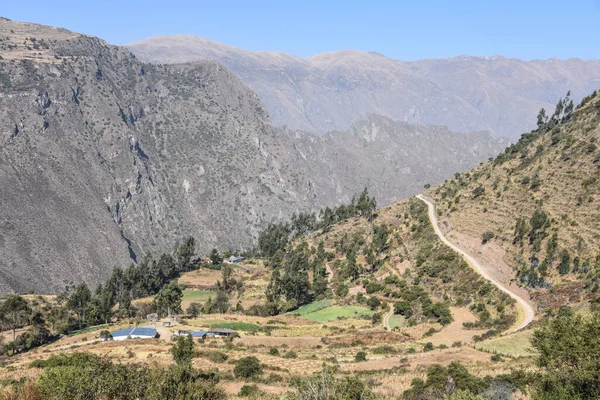
Balanced on a steep mountainside overlooking the Sacred Valley, Willoq delivers some of the region’s most breathtaking vistas while sustaining a lifestyle deeply rooted in traditional Andean customs. The village specializes in potato cultivation, growing dozens of native varieties across terraced fields that ascend toward the snow line.
Residents still rely on llamas and alpacas for transport and fiber, maintaining herds that graze high-altitude grasslands surrounding the settlement. The difficult access road limits visitor numbers, preserving an authentic atmosphere where children contribute to farming tasks and families congregate for evening meals by kerosene lamplight.
Where Ancient Wisdom Meets Modern Life

These mountain communities represent something far beyond mere tourist stops or historical curiosities — they embody living cultures that have adapted and flourished through centuries of profound transformation. From Spanish colonization through contemporary globalization, these settlements have preserved their fundamental character while thoughtfully incorporating outside elements that strengthen rather than undermine their traditional lifestyles.
The farmers who still plant according to lunar patterns, the weavers who embed ancestral wisdom into textile designs, and the families who welcome strangers to their dinner tables continue practices linking them directly to their Inca ancestors.
Today’s Sacred Valley visitors enjoy an extraordinary chance to witness this cultural persistence in action, experiencing not merely the remnants of an ancient civilization but its vibrant continuation in our modern world.
Like Travel Pug’s content? Follow us on MSN.
More from Travel Pug

- 20 Best Beach Towns in the Carolinas
- 13 Destinations Where Tourists Regularly Regret Their Trip
- 20 Things You Actually Get in First Class
- 20 Small Airports With Aviation Museums
- 20 Places in the U.S. That Are Perfect for a Reset Trip
Like Travel Pug’s content? Follow us on MSN.
